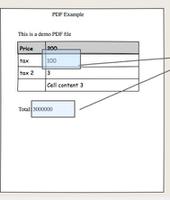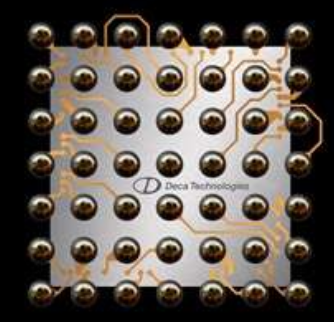如何以编程方式禁用系统设备?
我正在寻找在给定PID和VID或设备名称的情况下在C#.NET中禁用系统设备(USB或内部)的方法。
搜索后,我在CodeProject上找到了用于C#的硬件助手库。
但是我需要在XP,Vista和Windows 7(x86和x64操作系统)上都可以使用的东西…
有谁知道可以在所有操作系统上使用的解决方案?
回答:
看起来drf版本中有两件事给您带来麻烦。您的x64问题是由SP_DEVINFO_DATA的uint需要IntPtr引起的。第二个问题是SetupDiGetDevicePropertyW函数是Vista
+,不会在XP上运行。
这是修正了这两个问题的版本。我在XPx86和Win7X64上测试了x86和AnyCPU。
public static class DisableHardware{
const uint DIF_PROPERTYCHANGE = 0x12;
const uint DICS_ENABLE = 1;
const uint DICS_DISABLE = 2; // disable device
const uint DICS_FLAG_GLOBAL = 1; // not profile-specific
const uint DIGCF_ALLCLASSES = 4;
const uint DIGCF_PRESENT = 2;
const uint ERROR_INVALID_DATA = 13;
const uint ERROR_NO_MORE_ITEMS = 259;
const uint ERROR_ELEMENT_NOT_FOUND = 1168;
static DEVPROPKEY DEVPKEY_Device_DeviceDesc;
static DEVPROPKEY DEVPKEY_Device_HardwareIds;
[StructLayout(LayoutKind.Sequential)]
struct SP_CLASSINSTALL_HEADER
{
public UInt32 cbSize;
public UInt32 InstallFunction;
}
[StructLayout(LayoutKind.Sequential)]
struct SP_PROPCHANGE_PARAMS
{
public SP_CLASSINSTALL_HEADER ClassInstallHeader;
public UInt32 StateChange;
public UInt32 Scope;
public UInt32 HwProfile;
}
[StructLayout(LayoutKind.Sequential)]
struct SP_DEVINFO_DATA
{
public UInt32 cbSize;
public Guid classGuid;
public UInt32 devInst;
public IntPtr reserved; // CHANGE #1 - was UInt32
}
[StructLayout(LayoutKind.Sequential)]
struct DEVPROPKEY
{
public Guid fmtid;
public UInt32 pid;
}
[DllImport("setupapi.dll", SetLastError = true)]
static extern IntPtr SetupDiGetClassDevsW(
[In] ref Guid ClassGuid,
[MarshalAs(UnmanagedType.LPWStr)]
string Enumerator,
IntPtr parent,
UInt32 flags);
[DllImport("setupapi.dll", SetLastError = true)]
static extern bool SetupDiDestroyDeviceInfoList(IntPtr handle);
[DllImport("setupapi.dll", SetLastError = true)]
static extern bool SetupDiEnumDeviceInfo(IntPtr deviceInfoSet,
UInt32 memberIndex,
[Out] out SP_DEVINFO_DATA deviceInfoData);
[DllImport("setupapi.dll", SetLastError = true)]
static extern bool SetupDiSetClassInstallParams(
IntPtr deviceInfoSet,
[In] ref SP_DEVINFO_DATA deviceInfoData,
[In] ref SP_PROPCHANGE_PARAMS classInstallParams,
UInt32 ClassInstallParamsSize);
[DllImport("setupapi.dll", SetLastError = true)]
static extern bool SetupDiChangeState(
IntPtr deviceInfoSet,
[In] ref SP_DEVINFO_DATA deviceInfoData);
[DllImport("setupapi.dll", SetLastError = true)]
static extern bool SetupDiGetDevicePropertyW(
IntPtr deviceInfoSet,
[In] ref SP_DEVINFO_DATA DeviceInfoData,
[In] ref DEVPROPKEY propertyKey,
[Out] out UInt32 propertyType,
IntPtr propertyBuffer,
UInt32 propertyBufferSize,
out UInt32 requiredSize,
UInt32 flags);
[DllImport("setupapi.dll", SetLastError = true)]
static extern bool SetupDiGetDeviceRegistryPropertyW(
IntPtr DeviceInfoSet,
[In] ref SP_DEVINFO_DATA DeviceInfoData,
UInt32 Property,
[Out] out UInt32 PropertyRegDataType,
IntPtr PropertyBuffer,
UInt32 PropertyBufferSize,
[In,Out] ref UInt32 RequiredSize
);
static DisableHardware()
{
DisableHardware.DEVPKEY_Device_DeviceDesc = new DEVPROPKEY();
DEVPKEY_Device_DeviceDesc.fmtid = new Guid(
0xa45c254e, 0xdf1c, 0x4efd, 0x80, 0x20, 0x67,
0xd1, 0x46, 0xa8, 0x50, 0xe0);
DEVPKEY_Device_DeviceDesc.pid = 2;
DEVPKEY_Device_HardwareIds = new DEVPROPKEY();
DEVPKEY_Device_HardwareIds.fmtid = new Guid(
0xa45c254e, 0xdf1c, 0x4efd, 0x80, 0x20, 0x67,
0xd1, 0x46, 0xa8, 0x50, 0xe0);
DEVPKEY_Device_HardwareIds.pid = 3;
}
public static void DisableDevice(Func<string, bool> filter, bool disable = true)
{
IntPtr info = IntPtr.Zero;
Guid NullGuid = Guid.Empty;
try
{
info = SetupDiGetClassDevsW(
ref NullGuid,
null,
IntPtr.Zero,
DIGCF_ALLCLASSES);
CheckError("SetupDiGetClassDevs");
SP_DEVINFO_DATA devdata = new SP_DEVINFO_DATA();
devdata.cbSize = (UInt32)Marshal.SizeOf(devdata);
// Get first device matching device criterion.
for (uint i = 0; ; i++)
{
SetupDiEnumDeviceInfo(info,
i,
out devdata);
// if no items match filter, throw
if (Marshal.GetLastWin32Error() == ERROR_NO_MORE_ITEMS)
CheckError("No device found matching filter.", 0xcffff);
CheckError("SetupDiEnumDeviceInfo");
string devicepath = GetStringPropertyForDevice(info,
devdata, 1); // SPDRP_HARDWAREID
// Uncomment to print name/path
//Console.WriteLine(GetStringPropertyForDevice(info,
// devdata, DEVPKEY_Device_DeviceDesc));
//Console.WriteLine(" {0}", devicepath);
if (devicepath != null && filter(devicepath)) break;
}
SP_CLASSINSTALL_HEADER header = new SP_CLASSINSTALL_HEADER();
header.cbSize = (UInt32)Marshal.SizeOf(header);
header.InstallFunction = DIF_PROPERTYCHANGE;
SP_PROPCHANGE_PARAMS propchangeparams = new SP_PROPCHANGE_PARAMS();
propchangeparams.ClassInstallHeader = header;
propchangeparams.StateChange = disable ? DICS_DISABLE : DICS_ENABLE;
propchangeparams.Scope = DICS_FLAG_GLOBAL;
propchangeparams.HwProfile = 0;
SetupDiSetClassInstallParams(info,
ref devdata,
ref propchangeparams,
(UInt32)Marshal.SizeOf(propchangeparams));
CheckError("SetupDiSetClassInstallParams");
SetupDiChangeState(
info,
ref devdata);
CheckError("SetupDiChangeState");
}
finally
{
if (info != IntPtr.Zero)
SetupDiDestroyDeviceInfoList(info);
}
}
private static void CheckError(string message, int lasterror = -1)
{
int code = lasterror == -1 ? Marshal.GetLastWin32Error() : lasterror;
if (code != 0)
throw new ApplicationException(
String.Format("Error disabling hardware device (Code {0}): {1}",
code, message));
}
private static string GetStringPropertyForDevice(IntPtr info, SP_DEVINFO_DATA devdata,
uint propId)
{
uint proptype, outsize;
IntPtr buffer = IntPtr.Zero;
try
{
uint buflen = 512;
buffer = Marshal.AllocHGlobal((int)buflen);
outsize=0;
// CHANGE #2 - Use this instead of SetupDiGetDeviceProperty
SetupDiGetDeviceRegistryPropertyW(
info,
ref devdata,
propId,
out proptype,
buffer,
buflen,
ref outsize);
byte[] lbuffer = new byte[outsize];
Marshal.Copy(buffer, lbuffer, 0, (int)outsize);
int errcode = Marshal.GetLastWin32Error();
if (errcode == ERROR_INVALID_DATA) return null;
CheckError("SetupDiGetDeviceProperty", errcode);
return Encoding.Unicode.GetString(lbuffer);
}
finally
{
if (buffer != IntPtr.Zero)
Marshal.FreeHGlobal(buffer);
}
}
}
以上是 如何以编程方式禁用系统设备? 的全部内容, 来源链接: utcz.com/qa/424067.html






